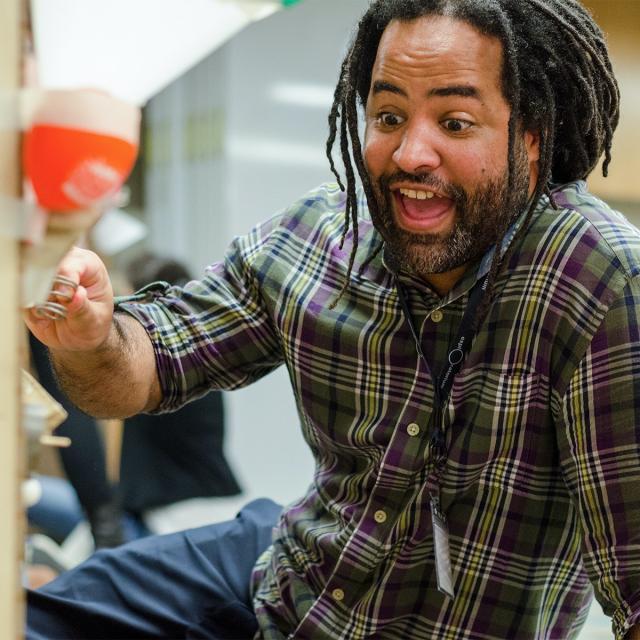MOOC List is learner-supported. When you buy through links on our site, we may earn an affiliate commission.

MOOC List is learner-supported. When you buy through links on our site, we may earn an affiliate commission.
Tinkering has recently been introduced into the educational field as a potential driver of creativity, excitement, and innovation in science learning. It is seen by many as an effective means to engage in exploring STEM concepts, practices and phenomena. Tinkering typically blends the high and low tech tools of science along with a strong aesthetic dimension that supports children’s (and adults’) self expression.
NB: This is a hands-on course, so you will need several tools and materials to do weekly activities. You are welcome to purchase only what you don't already have—or even better try to scrounge them from surplus stores!
For over a decade, the Exploratorium has been developing science-rich tinkering activities for both children and adults. We see tinkering as a fun yet serious endeavor—spanning many disciplines and content areas and fostering connections between art, science, and technology. Learners follow their own path to understanding by investigating tools and materials and exploring questions that interest them. This opens up a wide range of possible answers rather than any specific “right” one, particularly for teaching STEM (Science, Technology, Engineering, Math) subjects in the classroom. This course centers on activities related to Motion and Mechanisms, which offer a wealth of opportunities for thinking through making.
In this course, we won’t just show you how we develop tinkering activities; we’ll also delve into why. We’ll focus on three important aspects: activity design around specific materials, facilitation strategies, and environmental organization. We’ll also share some guiding principles and learning indicators we’ve developed that can help you integrate tinkering into your elementary and middle-school science program. Whether you’re new to making or a seasoned tinkerer, we hope this course will help you take the next step!
Our approach to teaching
This is a hands-on workshop, not a lecture-based class. Participation is essential! We want everyone to be making and tinkering together: trying things out, asking questions, sharing ideas, and reflecting together as a community. This is a wonderful chance to tinker and learn alongside people from all over the world and from all walks of life, so don’t be shy!
PLEASE NOTE: We have put a great deal of effort towards creating a supportive space that encourages exploration. We’ll give you a few ways to get started; prompt you to share your own observations and experience as learners, designers, and facilitators; and hopefully spark interesting conversations and discoveries along the way. While it’s not a requirement, we encourage you to take this class with a friend or colleague, or meet with other people in your area: having support or doing activities with others will enhance your experience and help you stay engaged.
Syllabus
WEEK 1
Introduction to Tinkering
What is tinkering? What does it mean to you? Is it different from engineering or other forms of making? We'll explore these questions in the readings and forums while getting a sneak preview of the activities we'll be sharing over the following modules.
WEEK 2
Marble Machines
Let's get started with our first activity! Marble Machines are creative ball-run contraptions made from familiar materials. This week we will show you the activity in action, talk about its design, then discuss in detail how to build your own Marble Machines set. We also hear from the artist who inspired the activity, and Eleanor Duckworth will share her pedagogical perspective.
WEEK 3
Cardboard automata
This week, we turn our attention to Cardboard Automata: inspired by crank-operated mechanical devices that tell miniature stories with movement and narrative, these simple but engaging contraptions are often a vehicle for personal expression and humor.
WEEK 4
Chain Reaction
A Chain Reaction machine is a deceptively simple concept, but one that allows for an incredibly complex and deep investigation into something we experience every day: the relationship between cause and effect. It brings all of a tinkerer’s skills to bear to improvise, build, troubleshoot, and imagine a problem and its solution!
WEEK 5
Research + Practice
This week is dedicated to exploring the relationship between practice and research about learning through tinkering.
MOOC List is learner-supported. When you buy through links on our site, we may earn an affiliate commission.
MOOC List is learner-supported. When you buy through links on our site, we may earn an affiliate commission.
